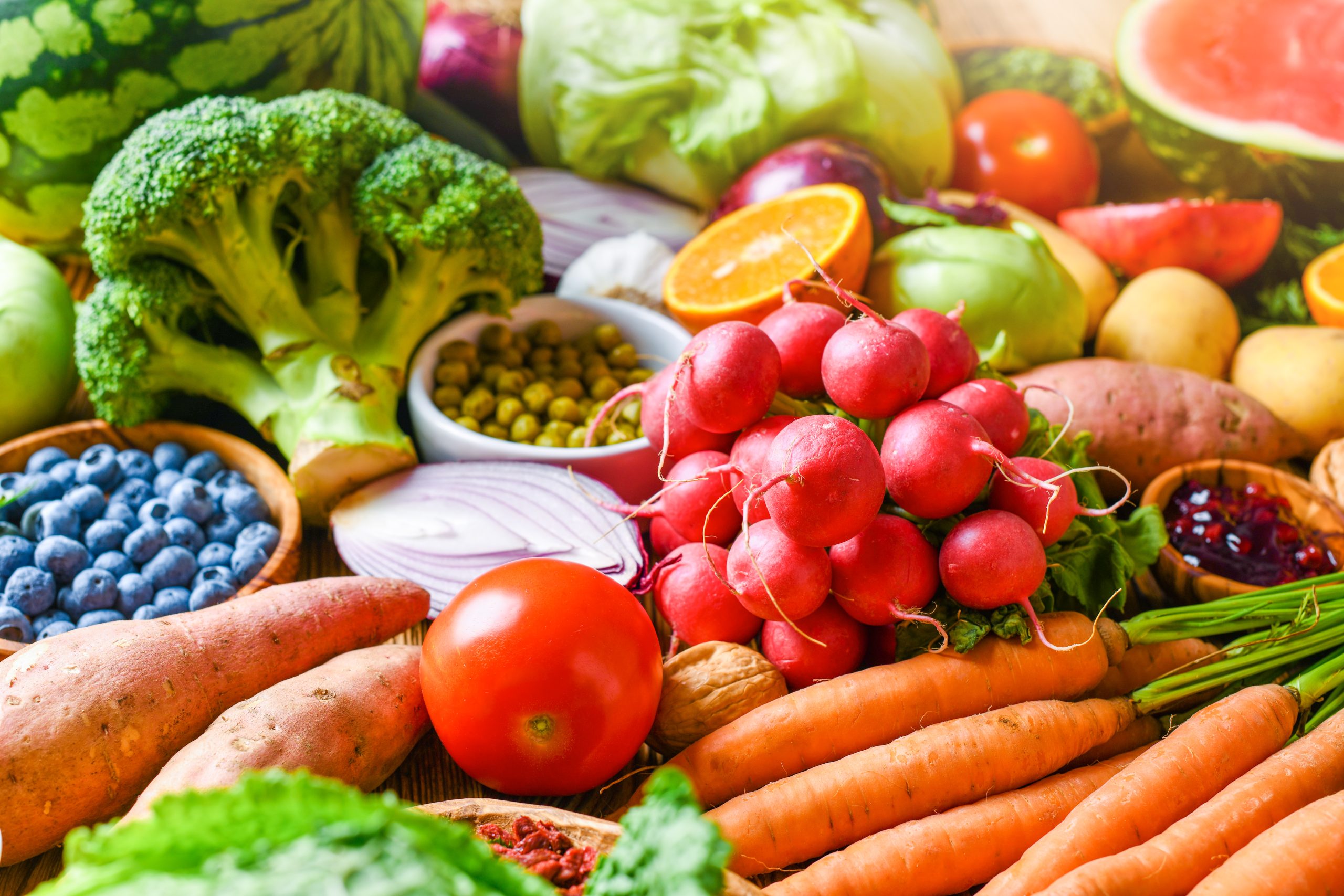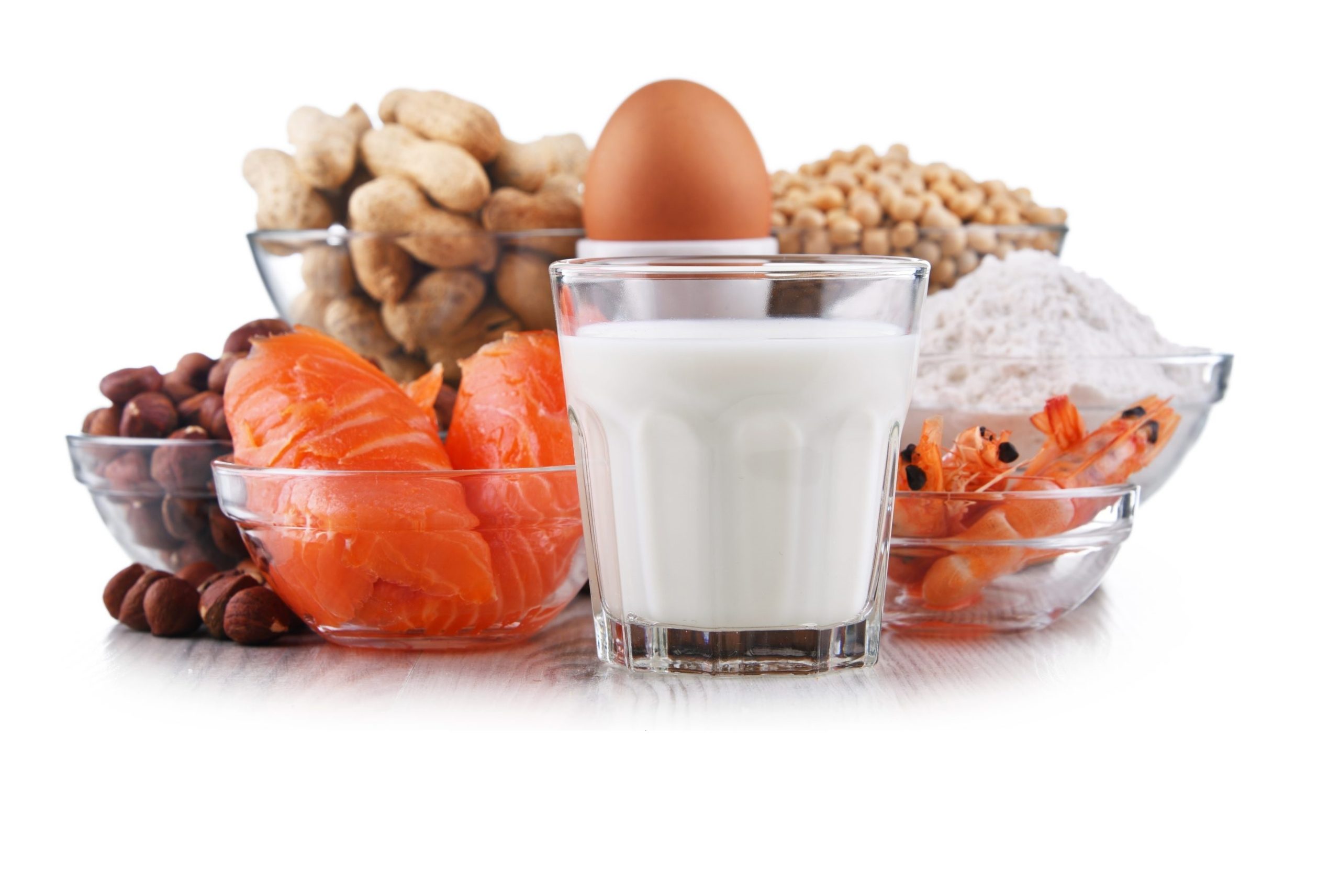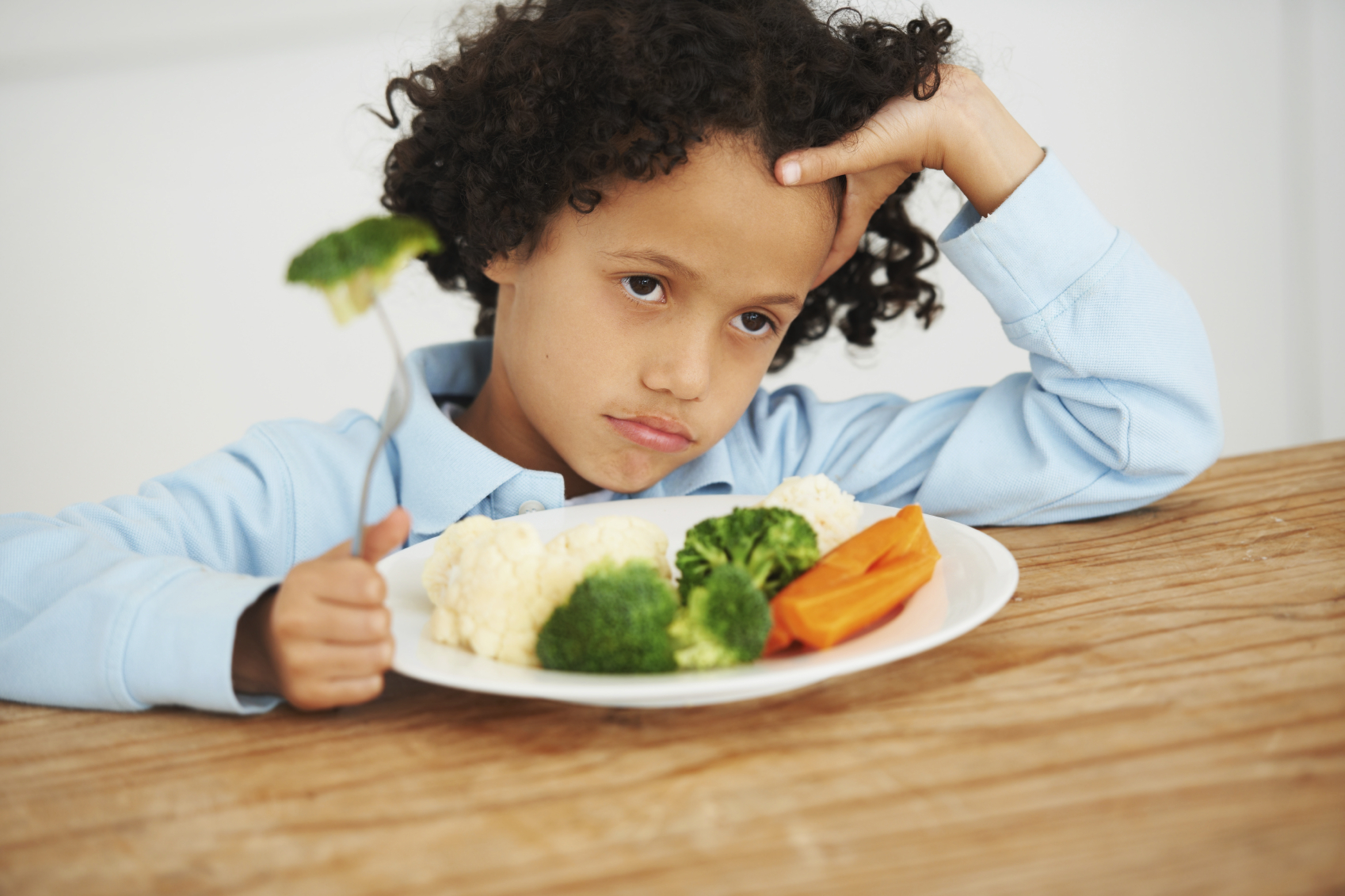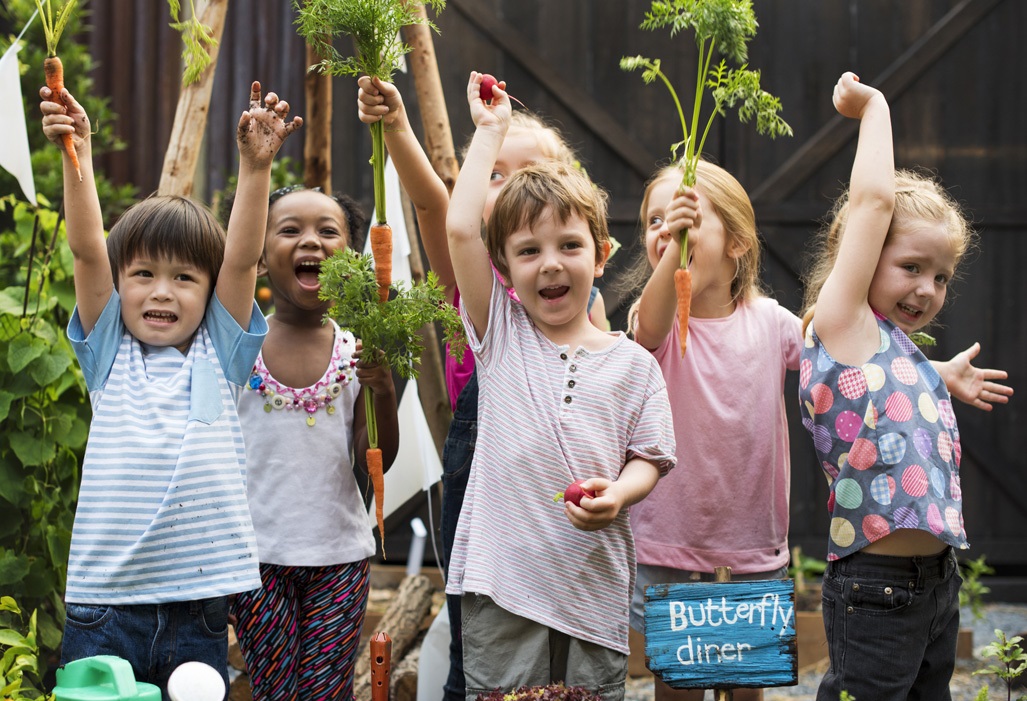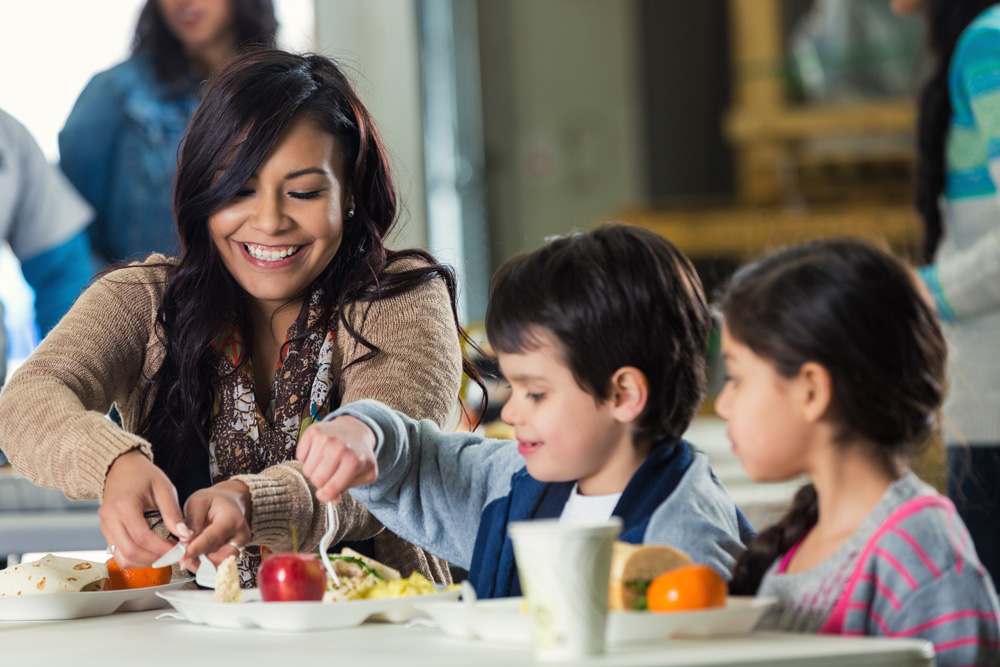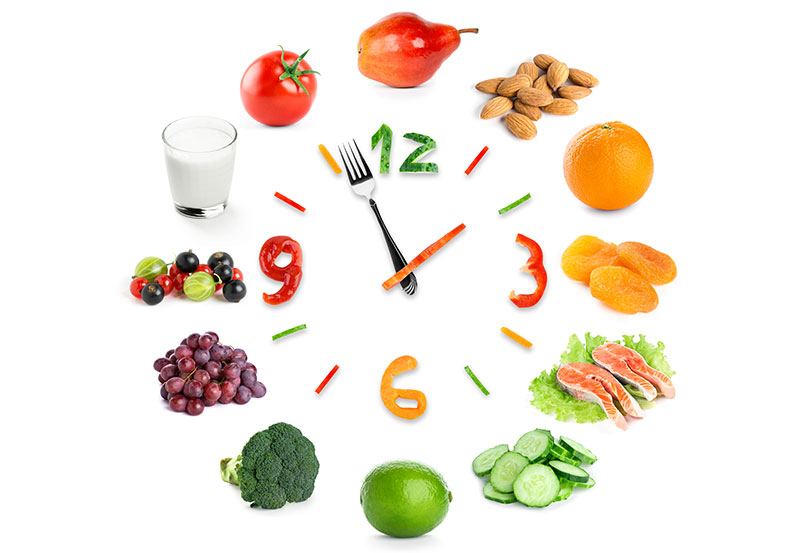
What Is Farm to ECE?
Farm to ECE connects children with local, fresh, and healthy foods while teaching them where the food comes from. The movement includes strategies and activities that are based on three core elements.
- Purchasing and serving locally produced foods
- Providing hands-on gardening opportunities
- Incorporating nutrition, food, and agriculture education in the child care curriculum

Why Farm to ECE?
Farm to ECE offers many benefits, such as:
- Providing access to healthy, local foods that increase children’s willingness to try and accept new foods
- Offering gardening and hands-on learning activities
- Encouraging family engagement opportunities to increase knowledge about healthy foods and local food systems
- Supporting local farmers and communities

How to Implement Farm to ECE
You may be wondering if Farm to ECE will work in your program. Yes, it can! Farm to ECE activities can be adapted to fit different geographic locations, enrollment numbers, diverse ages and abilities of children, and ECE settings (e.g., preschools, child care centers, family child care homes, Head Start, and Early Head Start).
Purchase Local Foods
A core element of Farm to ECE is purchasing and serving local and seasonal foods in meals and snacks.
- Find out what grows in your region and allow flexibility in your menu to incorporate seasonal and local foods into healthy recipes. Use USDA’s Seasonal Produce Guide to identify in-season vegetables and fruits.
- Highlight local items on your menu for families to see.
- Spotlight a local farmer, Community Supported Agriculture (CSA), or a farmer’s market vendor in the newsletter to let families know where your local menu items are grown or raised. Encourage families to buy local too!

Gardening
Another core element of Farm to ECE is planting a garden and providing hands-on gardening opportunities. This allows children to witness how food grows and where it comes from. When children help grow fruits and vegetables, they are more likely to eat them and try different varieties. Not to mention, gardening provides the opportunity to spend time outdoors and get physical exercise.
If your program does not have a yard or if you are unable to plant in the ground, container gardens and window boxes are excellent alternatives!

Food, Nutrition, and Agriculture Education
The last core element of Farm to ECE is engaging children in learning opportunities about food, nutrition, and agriculture, which will help increase their interest and knowledge about healthy foods.

Education from the Experts
Consider using a local farmer or Master Gardener from Cooperative Extension as an educational resource to engage children in learning.
- Take a field trip to a farm to explore and see firsthand where food is grown and raised.
- Ask if the children can sample some of the farmer’s products.
- Invite a local farmer or Master Gardener to speak about how food is grown. If you have a garden, give them a tour and ask for gardening tips.
Taking children to a farmer’s market can be a fun and exciting field trip. Offer learning opportunities while at the market.
- Play games where the children find different foods (e.g., scavenger hunt, BINGO, I Spy).
- Let the children pick a new food they would like to try. The array of colors may spark an urge to try something new.
- Ask the vendors questions about the foods they are selling. For example: What is the most popular item you sell? When do you have to start planting to have this food ready? What is your favorite vegetable, fruit, etc.?
To find a local farmer or farmer’s market, search LocalHarvest. To determine if your state has a Master Gardener program, find a Cooperative Extension office near you.

Taste Testing Local Foods
Taste tests are a great way to try local items before incorporating them into your menu. If your center participates in a CSA, you may receive produce the children have not tried before. Or, while at the farmer’s market, have each child pick out an item they would like to taste test. May’s Mealtime Memo provides ideas and resources on incorporating taste-testing events into your program.

Nutrition Education Curriculum
Nutrition education curriculum provides lessons and ideas on including gardening experiences and nutrition education messages in classroom activities. Here are some suggested resources.
- Grow It, Try It, Like It! is a garden-themed nutrition education kit with Farm to ECE lessons and hands-on nutrition education activities for child care centers and family child care homes.
- Harvest for Healthy Kids provides free activity kits that include an activity plan, picture cards, newsletters, and recipes for 13 different fruits and vegetables.
- IATP’s Farm to Childcare Curriculum Package includes activity ideas and resources for implementing Farm to ECE at your center.
- A Guide to Using The Creative Curriculum® to Support Farm-to-ECE Models explores how centers can use the Creative Curriculum® to include Farm to ECE learning opportunities into existing practices.
If you find a curriculum geared toward school-age students, do not automatically disregard it. You may be able to use some of the lessons and fun activities and adapt them to fit your child care program.

Dramatic Play
Children love to use their imaginations and engage in dramatic play. To incorporate Farm to ECE into play, make sure the dramatic play area is stocked with fun and colorful replicas of healthy foods that can be used in many different scenarios. Below are some ideas of other items to include in the dramatic play area:
- Farm: hats, gloves, seed packets, plastic gardening tools
- Farmer’s market: chalkboards or paper for signs, play money, baskets
- Grocery store: shopping carts, cash register, receipts, grocery bags, recycled packaging from real food items, play money, grocery lists
- Restaurant: chef’s hat, apron, play kitchen tools, plates, utensils
- Flower shop: artificial flowers, containers, ribbon, flower catalogs, blank cards

Art
While discussing healthy foods and where food comes from, encourage children to show their creativity through different art projects. Offer a variety of materials in the art area that children can incorporate into their artwork.
- Color or paint pictures about a garden or a farm, including the array of colors they’d find on the farm or in different vegetables.
- Have the children collect items from outside, such as leaves, sticks, and petals, to make a collage or use as a paintbrush.
- Use a variety of seeds (e.g., bean, sunflower, carrot, tomato, pea, etc.) to create a seed mosaic.

Music and Movement
To encourage children to be physically active and explore different movements, they can:
- Practice skipping, galloping, and other movements by acting like their favorite farm animals (e.g., waddle like a duck, gallop like a horse).
- Sing and dance to food or animal-themed songs.
- Use plastic eggs to make seed maracas and invite children to sing and dance with their created instruments.

Books
Select a variety of books that include stories about food, gardening, cooking, or farming. Here are some garden-themed books for preschoolers:
- Growing Vegetable Soup by Lois Ehlert
- Water, Weed, and Wait by Edith Hope Fine and Angela Demos Halpin
- Apple Countdown by Joan Holub
- Tops and Bottoms by Janet Stevens
- Rainbow Stew by Cathryn Falwell
- Rah Rah Radishes! by April Pulley Sayre
- The Seed Song by Judy Saksie
- Eating the Alphabet by Lois Ehlert
- The Tiny Seed by Eric Carle
Try to include books that have foods and recipes from around the world and include diverse images of farmers, cooks, and other roles. For a list of over 100 multicultural Farm to ECE books, check out Multicultural Collection of Farm to ECE Books. Here are a few suggestions:
- In the Garden with Dr. Carver by Susan Grigsby
- Sip, Slurp, Soup, Soup, Caldo, Caldo, Caldo by Diane Gonzales Bertrand
- Bee-Bim Bop! by Linda Sue Park
Mealtime Discussion Prompts
During mealtime, spark conversation with children about where food comes from using the questions below:
- Have you ever planted something in a garden?
- What is your favorite fruit or vegetable?
- What do plants need to grow?
- What letter does [pick a food in the meal] start with? What other foods begin with that letter?
- What color is [pick a fruit or vegetable in the meal]? What other fruits and vegetables are that color?
- Where does our food come from? Some food comes from plants, but some come from animals. Where do eggs come from? Milk? Cheese?

Menu Ideas
Use the fresh produce from your garden, CSA, or the farmer’s market to make these tasty recipes! Some recipes contain multiple food components listed in parentheses after the recipe.

You can find the featured Menu Ideas recipes in the resources below:
- The Child Nutrition Recipe Box has USDA standardized recipes for child care centers and family child care homes.
- The Child Nutrition Recipe Box: New CACFP Lunch/Supper Recipes has standardized recipes per age group (3–5 years old and 6–18 years old) and for servings of 6, 25, and 50.
References
Gardening Know How. (2022). Extension offices near you. https://www.gardeningknowhow.com/extension-search
Harvest for Healthy Kids. (2014). Harvest for healthy kids. http://www.harvestforhealthykids.org/
Institute for Agriculture and Trade Policy. (2014, May). Farm to childcare curriculum package. https://www.iatp.org/sites/default/files/2014_07_16_F2CC_Curriculum_f.pdf
Institute of Child Nutrition. (2022). Breakfast pizza with hashbrown crust – USDA recipe for child care centers. Child Nutrition Recipe Box. https://theicn.org/cnrb/recipes-for-centers-breakfast/breakfast-pizza-with-hashbrown-crust-usda-recipe-for-cacfp/
Institute of Child Nutrition. (2022). Child nutrition recipe box. https://theicn.org/cnrb/
Institute of Child Nutrition. (2022). Harvest delight – USDA recipe for child care centers. Child Nutrition Recipe Box. https://theicn.org/cnrb/recipes-for-centers-vegetables/harvest-delight-usda-recipe-for-cacfp/
Institute of Child Nutrition. (2022). New CACFP lunch/supper recipes. Child Nutrition Recipe Box. https://theicn.org/cnrb/2022-cacfp-recipes/
Institute of Child Nutrition. (2022). Salad shakers – USDA recipe for child care centers. Child Nutrition Recipe Box. https://theicn.org/cnrb/recipes-for-centers-vegetables/salad-shakers-usda-recipe-for-cacfp/
LocalHarvest. (n.d.). Local harvest. https://www.localharvest.org/
National Farm to School Network. (2017, May). A guide to using the creative curriculum® to support farm-to-ECE models. https://www.farmtoschool.org/resources-main/a-guide-to-using-the-creative-curriculum-to-support-farm-to-ece-models
National Farm to School Network. (2018, September). Getting started with farm to early care and education. https://www.farmtoschool.org/resources-main/getting-started-with-farm-to-early-care-and-education
National Farm to School Network. (n.d.). Farm to early care and education. https://www.farmtoschool.org/our-work/early-care-and-education
Ready Set Grow. (n.d.). Multicultural collection of farm to ECE books. http://www.pareadysetgrow.org/book-list/?ct=t(Ready_Set_Grow11_28_2017)&mc_cid=93d78583de&mc_eid=b7c5f86429
Rooted: Farm to Early Care and Education. (n.d.). Interest areas for young children. https://bit.ly/InterestECE
UNC Center for Health Promotion and Disease Prevention. (2022, March 31). Farm to early care and education. SNAP-ED Toolkit. https://snapedtoolkit.org/interventions/programs/farm-to-early-care-and-education/
U.S. Department of Agriculture. (2013, May 13). Grow it, try it, like it! Nutrition education kit featuring MyPlate. https://www.fns.usda.gov/tn/grow-it
U.S. Department of Agriculture. (2017, August). Farm to preschool. https://www.fns.usda.gov/cfs/farm-to-preschool
U.S. Department of Agriculture. (2019). Grow it, try it, like it! Fun with fruits and vegetables at family child care. https://www.fns.usda.gov/tn/grow-it-homes
U.S. Department of Agriculture, Agricultural Marketing Service. (n.d.). Local food directories. https://www.usdalocalfoodportal.com/#directories
U.S. Department of Agriculture, Food and Nutrition Service. (2015, March 13). Local foods in the child and adult care food program. https://www.fns.usda.gov/cacfp/local-foods-qas
U.S. Department of Agriculture, SNAP-Ed Connection. (n.d.). Seasonal produce guide. https://snaped.fns.usda.gov/seasonal-produce-guide








